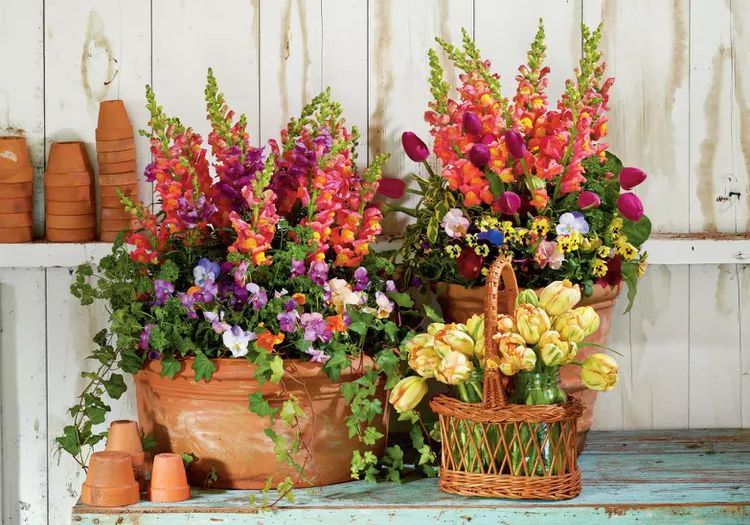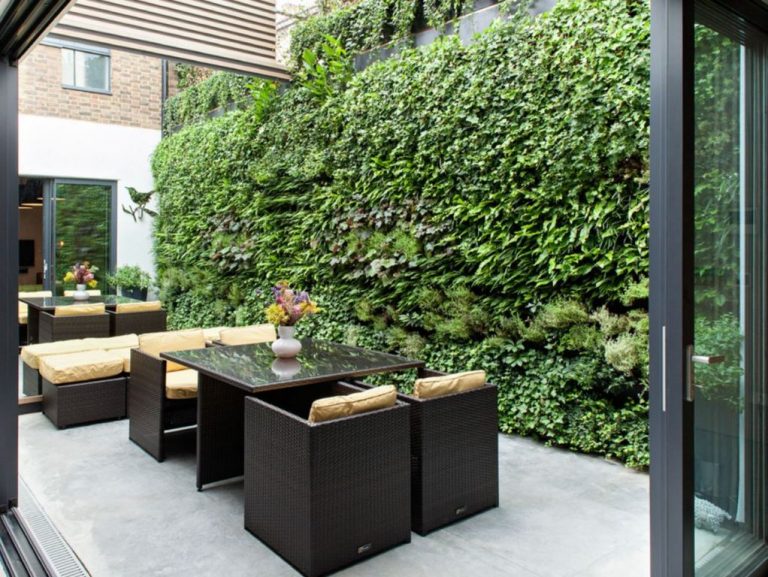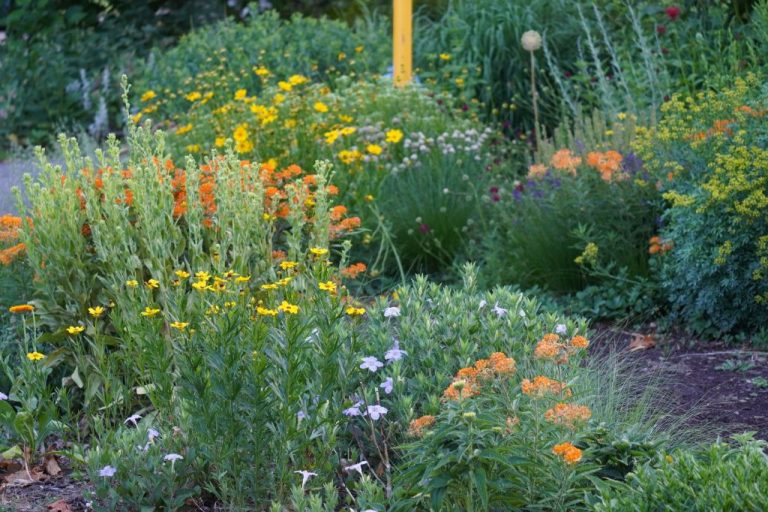Container Gardening: Growing Your Own Food In The City
Container gardening allows you to grow your own vegetables, herbs, and flowers in pots and containers rather than directly in the ground. This makes gardening possible even if you don’t have a yard or garden plot. There are many benefits to growing your own food in containers, such as having fresh ingredients right outside your door, knowing exactly where your food comes from, and being able to move your containers if needed. This guide will provide tips on choosing the right containers, the best soil mixes to use, which plants grow well in pots, how to care for container plants, ideas for maximizing space when gardening in containers, controlling pests, and overwintering container plants. With the right approach, anyone can enjoy the rewards of container gardening!
Some key benefits of container gardening include:
- Flexibility – containers are movable so you can place them wherever you have space and sunlight
- Accessibility – avoids the need to dig or weed so great for those with mobility issues
- Less pests and diseases – isolates plants from soil-borne diseases
- Control over soil quality – can provide ideal soil mix for each plant
- Extends the growing season – move containers to protect from frost
Choosing a Container
When selecting a container for growing vegetables and herbs, you’ll want to consider the material, size, and drainage. Some great options include self-watering boxes like EarthBoxes, wooden planter boxes, 5-gallon buckets, and mesh bags.
EarthBoxes are a popular choice because they are large, durable plastic containers with a water reservoir in the bottom to self-water the plants. They come in different sizes for growing various vegetables. Wooden planter boxes are attractive, durable, and provide plenty of depth for root growth. Look for boxes made of rot-resistant cedar or redwood. Five-gallon buckets are inexpensive, easy to find, and work well for plants like tomatoes and peppers. Cut drainage holes in the bottom if they don’t already have them. Mesh bags allow air flow to the roots while providing support and shaping.
Consider the mature size of the vegetables you want to grow when selecting a container. Larger vegetables like tomatoes, eggplants, squash, and cucumbers need at least a 5-gallon container. Leafy greens, herbs, beans, and peppers do well in 2-3 gallon pots. Make sure the container has drainage holes in the bottom to prevent soggy soil. A container width of at least 12 inches allows you to grow vegetables in rows.
Soil
Finding the right soil is crucial for growing healthy plants in containers. While you can try using garden soil from your yard, it often doesn’t have the right nutrient balance or texture for container gardening. Instead, most container gardeners recommend using potting mix, which is specially formulated for growing plants in pots and planters.
Potting mixes are typically lightweight, allow for good drainage, and contain a blend of ingredients like peat moss, vermiculite, compost, and perlite. This gives potting mix the water retention capabilities plants need, along with good aeration. Potting soils also have a balanced nutrient profile to feed plants over the course of a season.
When purchasing potting mix, look for all-purpose mixes that are suitable for a wide variety of plants like vegetables, herbs, and flowers. You can also find specialty potting mixes tailored for specific types of plants if needed. Focus on quality over bargain brands, and avoid any mixes with chemical wetting agents or fertilizers added. With the right potting mix, your container garden is sure to thrive!
Plants to Grow
When choosing which plants to grow in your container garden, focus on vegetables and herbs that don’t require a lot of space for their roots to develop. Good options include leafy greens like lettuce, spinach, kale, chard, arugula, and parsley. These plants tend to have shallow root systems so they thrive in containers as small as 5-10 inches deep.
Tomatoes are one of the most popular vegetables for container gardening. Choose determinate varieties which stay compact, like Better Boy, Early Girl, or Patio. Cherry tomatoes are also great options for containers and produce prolifically. Peppers are another excellent choice – go for smaller varieties like thumbelina or banana peppers.
Herbs like basil, thyme, rosemary, oregano, sage, and mint do very well in containers too. Make sure the container is large enough to accommodate the herb’s expected mature size. For example, mint is invasive and should be kept separated in its own pot.
When selecting plants, pay attention to sunlight needs. Leafy greens and herbs thrive in partial sun while tomatoes, peppers, and other fruiting vegetables need at least 6 hours of direct sunlight per day. Also consider companion planting to maximize the space. For example, plant tall tomatoes in the center surrounded by lower-growing herbs and lettuces.
Good sources for container gardening plant choices include:
https://growinginthegarden.com/20-best-vegetables-for-container-gardening/ and https://www.thespruce.com/great-vegetables-to-grow-in-containers-848214
Caring for Your Plants
Caring for container plants requires some special considerations compared to caring for plants grown in the ground. Proper watering, fertilizing, and pruning are essential to keeping container plants healthy and productive.
Watering is one of the most important factors. Container plants dry out much faster than in-ground plants, so you need to check soil moisture frequently. Water thoroughly until it drains from the bottom when the top inch of soil becomes dry. Consider using drip irrigation or self-watering containers to make watering easier.
Fertilizing is also crucial, as container plants quickly deplete nutrients from potting soil. Use a balanced liquid fertilizer every 7-14 days during the growing season. Slow-release fertilizer pellets mixed into the soil are another good option. Avoid over-fertilizing, which can burn plants.
Pruning keeps container plants tidy, promotes bushy growth, and improves flowering and fruit production. Prune leggy growth, dead branches, and spent flowers by pinching or using hand shears. Take care not to over-prune containers with limited space.
Watch for common problems like wilting, yellowing leaves, stunted growth, and pests/diseases. This often indicates issues with watering, nutrients, or environmental factors. Make adjustments and treat pests/diseases as needed. With good care, you can keep container plants thriving all season.
Sources:
https://www.bhg.com/gardening/container/basics/container-gardening-tips/
Maximizing Space
One of the great things about container gardening is that it allows you to maximize your growing space, even in a small urban area. Here are some tips for making the most of every inch:
Use trellises and vertical supports to allow vining crops like tomatoes, cucumbers, beans, and peas to grow upwards instead of sprawling out. Set up trellises along fences, railings, or walls. You can also use obelisks, cages, or stakes within pots to support climbing plants.[1]
Hang containers along railings, from overhead beams, or on wall-mounted racks. Hanging baskets are great for strawberries, herbs, trailing flowers, and more. Mason jars can be hung with macrame hangers. Get creative!
Use vertical gardening systems like stacked pots, wall-mounted planters, or vertical gardens made from gutters or poles. These systems allow you to garden in a small footprint. Fill vertical spaces like walls, corners, and odd areas.
On balconies and patios, use decorative pots, planters, window boxes, and railing planters to add greenery and edibles. Choose compact varieties of veggies and herbs. Arrange containers in efficient designs to maximize growing area.

With a little creativity, anyone can create a thriving container garden, even with limited ground space.
[2]
Pest Control
Pests can be a frustrating problem in container gardens. Some of the most common pests are aphids, spider mites, mealybugs, and fungus gnats. A key way to avoid pests is through prevention – making sure to buy only healthy plants, cleaning containers thoroughly before each use, and avoiding overwatering (a common cause of fungus gnats) (Source).
If pests do show up, there are organic remedies to try before turning to chemical pesticides. Insecticidal soap or neem oil spray can control soft-bodied insects like aphids and mealybugs. For spider mites, spray plants down with a strong stream of water and introduce predatory mites. Sticky traps can capture adult fungus gnats while reducing overwatering dries up larvae. Ladybugs, lacewings, and other beneficial insects will prey on pests – attract them by planting pollen/nectar plants nearby (Source). With some diligence, container gardeners can keep pests at bay the natural way.
Overwintering
As winter approaches, you’ll need to make plans to overwinter your container garden plants. Many options exist for bringing plants indoors or storing containers outside.
Tender annuals that cannot withstand freezing temperatures can be brought inside and placed in a sunny window. Allow the soil to dry out partially between waterings. According to the Penn State Extension, hardy perennials and shrubs can also be overwintered indoors in a cool basement or garage where they will go dormant for the winter (Source).
Another option is to group containers close together in a protected outdoor location, such as against the house foundation or under an overhang. Water them well and cover with insulating materials like straw, leaves, or compost (Source). This will help protect the roots from wide temperature swings.
For easiest overwintering, choose perennials and shrubs rated at least one zone hardier than your area according to Proven Winners (Source). These plants can often remain in their pots outside with minimal protection.
When spring arrives, remove any coverings and move pots back outdoors after the danger of frost has passed. Fertilize and water to spur new growth. Dividing overgrown perennials and repotting plants in fresh soil will get your container garden off to a great start for the new growing season.
Getting Started
The first thing to consider before embarking on container gardening is assessing the space you have available. Determine how much sunlight your outdoor or indoor area receives daily, as most edible plants require at least 6 hours of direct sunlight (Vegetable Container Gardening). Consider how much time you can devote to plant care as well. Then, make a plan for the types of plants you’d like to grow and research the individual needs of each.
Next, acquire the necessary materials. You’ll need containers of sufficient size, potting soil formulated for containers, seeds or starter plants, and any support structures like trellises. It’s helpful to have gardening tools like trowels, pruners, and gloves. Don’t forget to have water easily accessible. Once you have everything, determine the layout and get planting!
Conclusion
Container gardening is a fantastic way to grow your own food, even if you live in an urban area without much space. Growing in containers has so many benefits – you can grow nutrient-rich vegetables and herbs without a yard, tailor the soil’s nutrients to each plant, place containers in convenient spots, and enjoy decorating with your edible plants.
After learning about choosing the right container, soil, plants, and care, you should feel inspired to start your own container garden! With a bit of effort and creativity, you’ll be rewarded with fresh tomatoes on your balcony or herbs on your windowsill. Don’t let a lack of space stop you from enjoying homegrown produce.
For more information on getting started with container gardening, check out these useful resources: Renee’s Garden and Cornell Cooperative Extension.
Get growing this season – your container garden will bring you joy, satisfaction and delicious foods!






